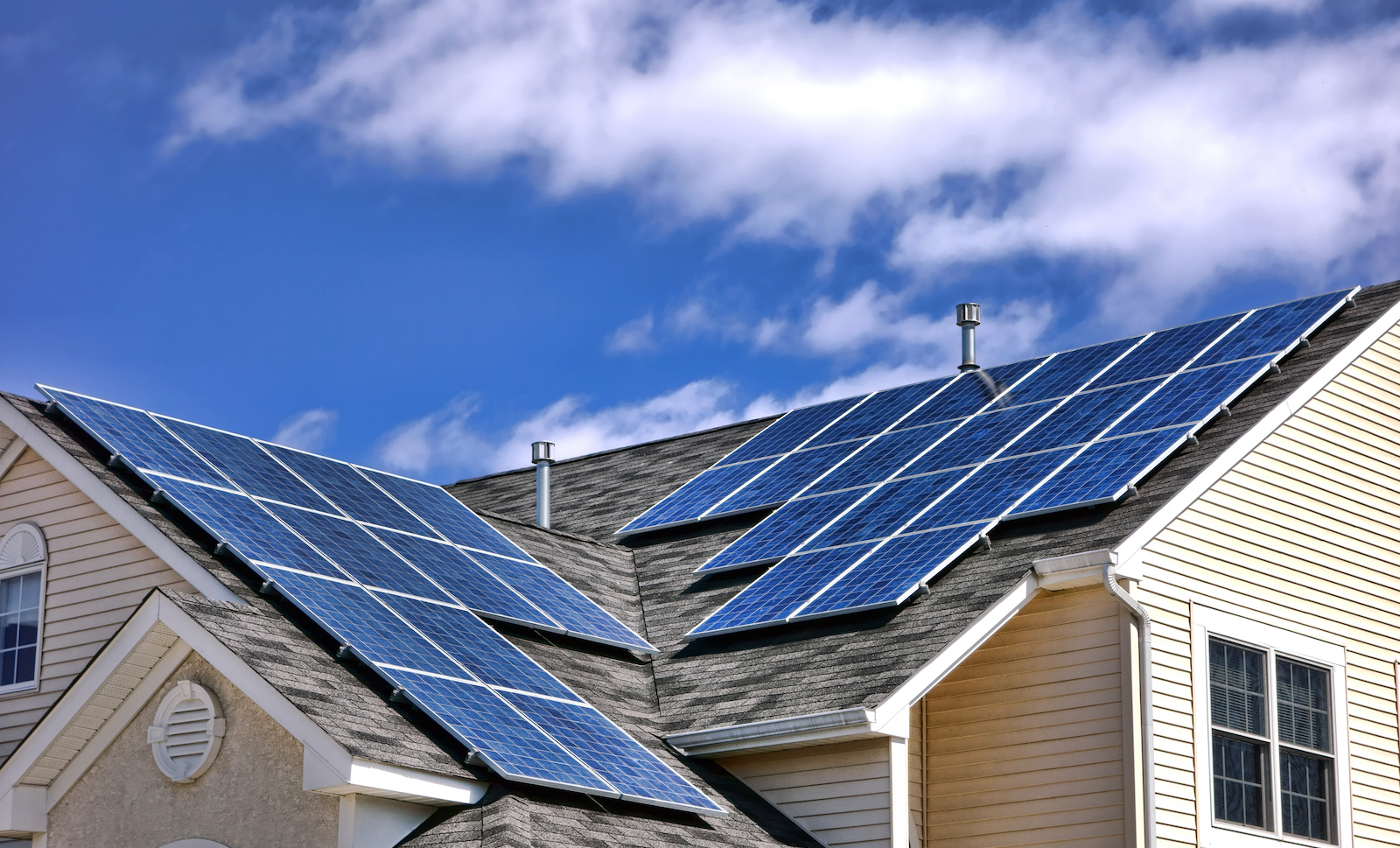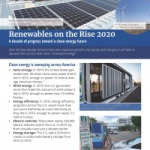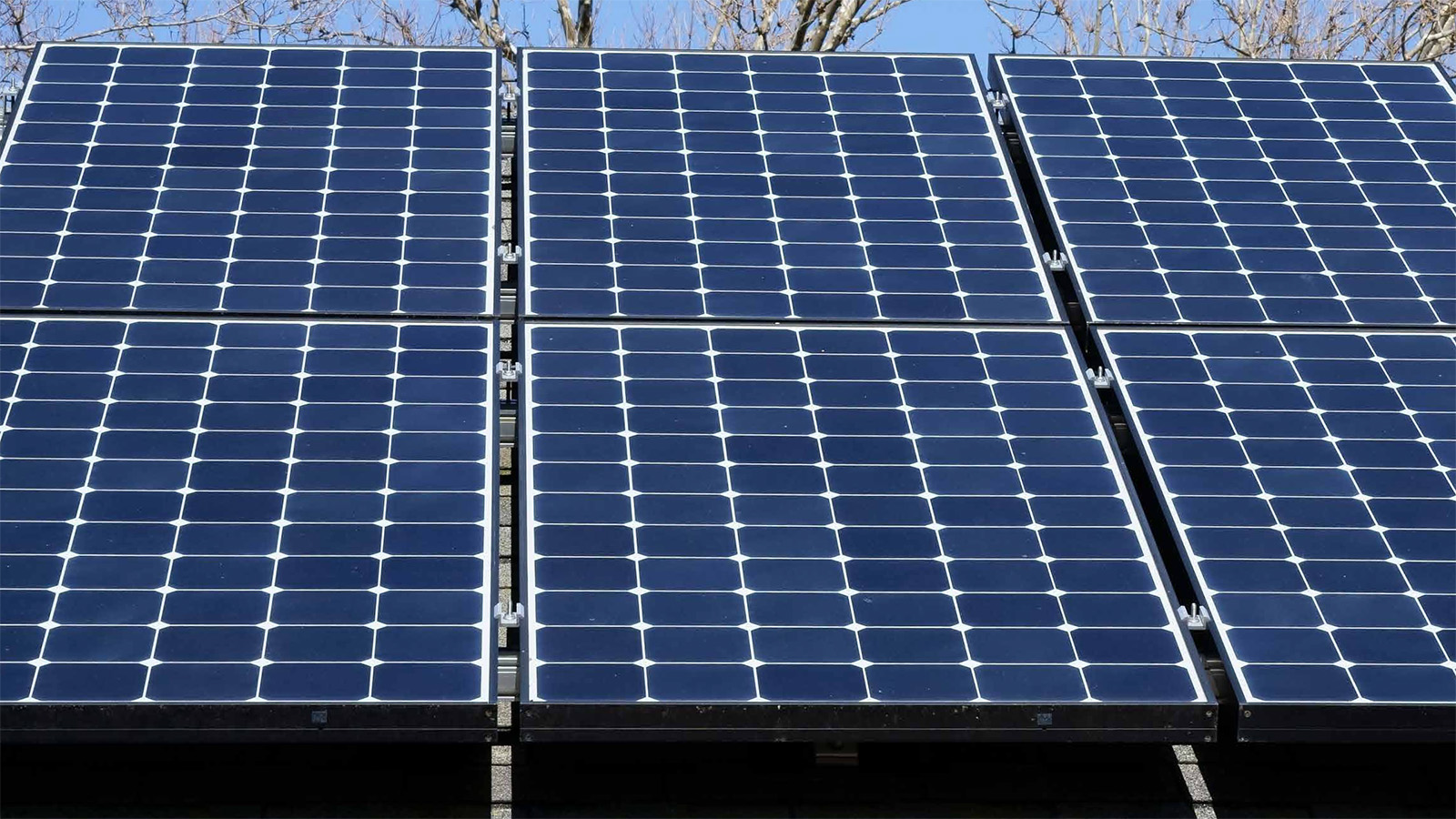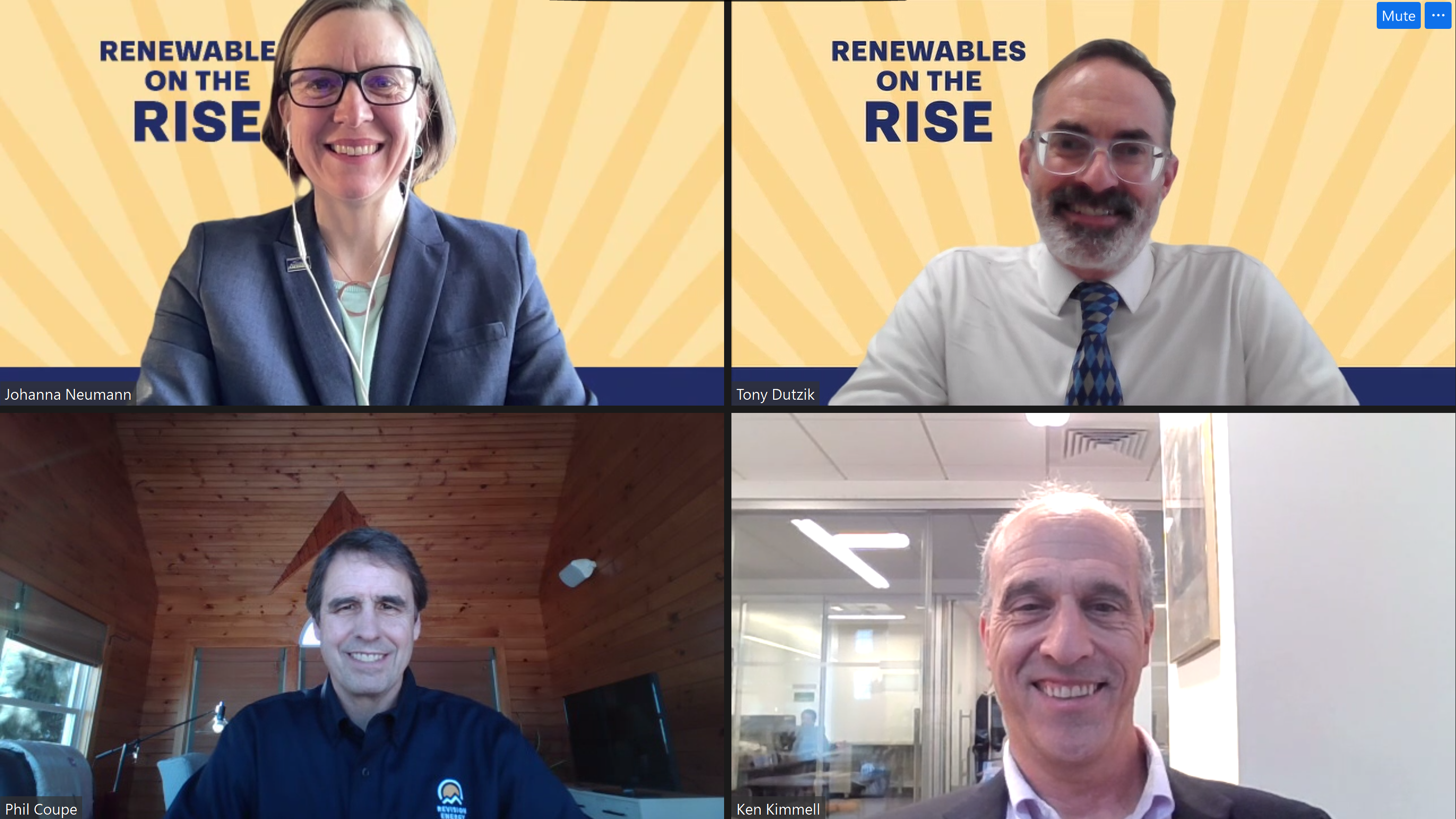
Renewables on the Rise 2020
A decade of progress toward a clean energy future
Clean energy is sweeping across America and is poised for more dramatic growth in the coming years. Wind and solar energy were just beginning to take off ten years ago; today, they are everyday parts of America’s energy landscape.
Downloads
Environment Oregon Research & Policy Center

Executive summary
Clean energy is sweeping across America and is poised for more dramatic growth in the coming years.
Wind and solar energy were just beginning to take off ten years ago; today, they are everyday parts of America’s energy landscape. America produces almost four times as much renewable electricity from the sun and wind as it did in 2010. Today, wind, solar and geothermal power provide nearly 10% of our nation’s electricity.
That’s not all. Just a decade ago, energy-saving LED light bulbs cost $40 apiece; today, they cost a couple dollars at the hardware store. Just a few years ago, electric vehicles seemed a far-off solution to decarbonize our transportation system; now, they have broken through to the mass market.
Virtually every day, there are new developments that increase our ability to produce renewable energy, apply renewable energy more widely and flexibly to meet a wide range of energy needs, and reduce our overall energy use — developments that enable us to envision an economy powered entirely with clean, renewable energy.
The last decade has proven that clean energy can power American homes, businesses and industry — and has put America on the cusp of a dramatic shift away from polluting energy sources. With renewable energy prices falling and new energy-saving technologies coming online every day, states, cities, businesses and the nation should work to obtain 100% of our energy from clean, renewable sources.
Clean energy leadership
States across America are taking advantage of the power of clean, renewable energy. There are clean energy leaders in big states and small states, red states and blue states, states on the coasts and states in the Heartland.
Solar energy: America produces over 30 times more solar power than it did in 2010, enough to power more than 16 million average American homes. California, North Carolina, Arizona, Nevada and Texas have seen the greatest total increases in solar energy generation since 2010. California’s landmark “Million Solar Roofs” program, which accelerated the state’s solar industry in the mid-2000s, along with its strong renewable electricity standard and other policies, contributed to the dramatic rise of solar power there.
Wind energy: America has more than tripled the amount of wind power it produces since 2010, producing enough to power over 33 million homes. Texas, Oklahoma, Kansas, Iowa and Illinois experienced the greatest total increases in wind energy generation from 2010 to 2019. In Texas alone there are now more than 13,000 wind turbines, the result of an early commitment to renewable energy and a $7 billion investment to integrate wind energy into the state’s electric grid. In Kansas and Oklahoma, wind generation grew more than six-fold from 2010 to 2019.
Energy efficiency: Energy efficiency programs across the U.S. saved more than one and half times as much electricity in 2018 as in 2010, as states ramped up their investments in weatherization and energy-saving products. In 2018, these programs saved enough electricity to power more than 2.5 million homes. Rhode Island, Massachusetts, Maryland, Illinois and the District of Columbia saw the greatest increases in the share of electricity saved through efficiency measures, according to the American Council for an Energy-Efficient Economy. In terms of total savings, Vermont joined Massachusetts and Rhode Island as the three states with the highest percent savings out of total retail sales saved through energy efficiency programs in 2018.
Electric vehicles: There were over 330,000 electric vehicles sold in the U.S. in 2019, compared to virtually none just a decade earlier. Over 1 million battery powered and plug-in hybrid EVs have been sold cumulatively across the U.S., with over 50 models currently on the market. California, New York, Washington, Florida and Texas have seen the most electric vehicles (EVs) sold as of June 2019. Five of the top 10 states for EV sales require that a certain percentage of each automaker’s sales be zero-emission vehicles.
Energy storage: Expanding the ability to store electricity can help the nation take full advantage of its vast potential for clean, renewable energy. The United States saw an 20-fold increase in utility-scale battery storage from 2010 to 2019. California, Illinois, Texas, Hawaii and West Virginia lead the nation in additions to utility-scale battery storage since 2010, though the industry is still in its infancy. By the end of 2019, California accounted for over a quarter of the nation’s total utility-scale battery storage capacity. California’s aggressive adoption of energy storage was due in part to a California Public Utilities Commission requirement that utilities increase energy storage capacity.
Untapped potential
Rapid improvements in technology and plummeting prices for clean energy suggest that America has only begun to tap its vast clean energy potential.
Nearly every segment of the clean energy market is experiencing rapid price declines. According to a study by IRENA, generation costs for onshore wind and solar photovoltaics (PV) have fallen between 3% and 16% every year from 2010 to 2019. The cost of utility-scale solar PV electricity fell 82% from 2010 to 2019, while the cost for onshore wind electricity fell by 39% in the same time period.
Renewable energy is only expected to get cheaper. Experts predict that the cost of utility solar PV systems will fall by 20% from 2020 to 2025, and solar PV is expected to be among the cheapest sources of power available by 2050. BloombergNEF predicts that the cost of utility-scale lithium-ion batteries will fall by 52% between 2018 and 2030, and that the U.S. will exceed 100 gigawatts of installed battery storage by 2040, an almost 100-fold increase from current capacity.
Technology advances are also making renewable energy technologies more efficient and effective. In 2007, the highest-capacity wind turbine in the world was 6 MW, with only one such test prototype actually in operation. Last year, General Electric deployed the first prototype of its massive “Haliade-X” wind turbine, which has a capacity of 12 MW, considered the most powerful offshore wind turbine in the world with the ability to power up to 16,000 homes.
New technologies that reduce energy consumption are becoming increasingly popular, such as LED lighting, which uses up to 80% less energy than traditional incandescent light bulbs. By 2027, the Department of Energy estimates LEDs could save 348 terawatt-hours of electricity, which is equivalent to the annual electrical output of 44 large power plants.
America’s renewable energy resources are enough to power the nation several times over. According to the National Renewable Energy Laboratory, the United States has the technical potential to meet its current electricity needs more than 75 times over with solar energy and more than 10 times over with wind energy. The technologies needed to harness and apply renewable energy are advancing rapidly. And researchers from a wide variety of academic and governmental institutions have developed a variety of scenarios suggesting renewable energy can meet all or nearly all of our society’s needs.
Moving forward
The U.S. should plan to meet all of its energy needs — for electricity, transportation and industry — with clean, renewable energy, and put policies and programs in place to achieve that goal.
Repowering America with clean, renewable energy is a key strategy in phasing out carbon pollution by 2050 — a necessary step to prevent the worst impacts of global warming. Transitioning to clean, renewable energy will also improve our health by preventing hazardous air pollution, and increase our safety by protecting us from the hazards of extracting, transporting and processing dangerous fuels.
While clean, renewable energy is advancing rapidly, fully replacing fossil fuels will require additional commitment and action. To accelerate progress, a growing number of businesses, cities and states are adopting bold renewable energy targets and goals. Hawaii set the first 100% renewable energy target in 2015, and has since been joined by California, New Mexico, Maine, New York, Virginia and Washington.
Local governments, utilities and companies are also taking action. 165 cities and towns across the country have committed to 100% renewable energy, and 50 cities have already achieved it. Several utilities, including Xcel Energy, the Platte River Power Authority and MidAmerican Energy, have made commitments to source their electricity from carbon-free or renewable sources. The organization RE100 has also collected 100% renewable energy commitments from over 260 companies, including IKEA, Google and Facebook.
Topics
Find Out More


Recording of Rooftop Solar on the Rise webinar

Rooftop solar on the rise


